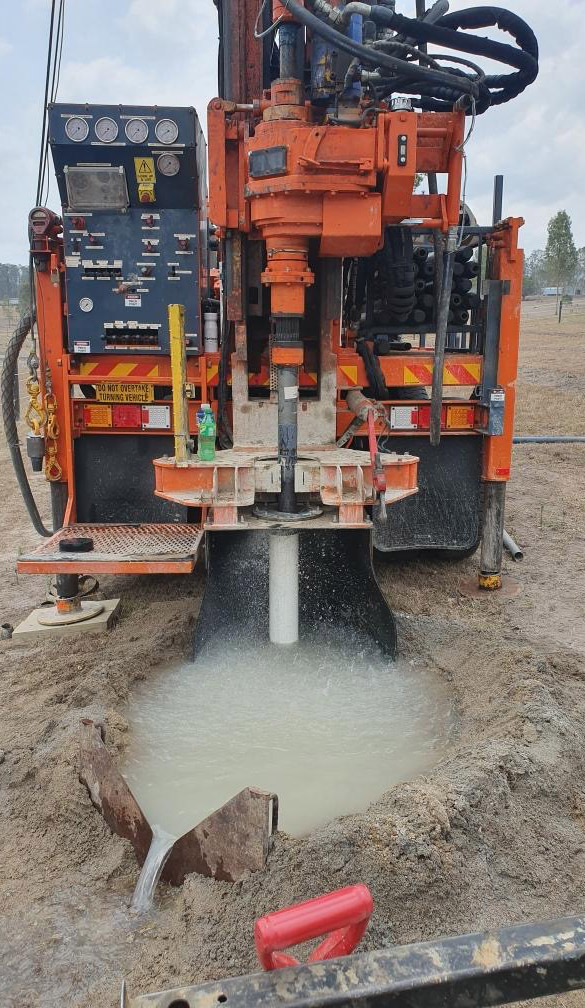The process of water Borehole Drilling
Click on a question of your interest below to find the answer.
You can put a borehole anywhere as long as there is sufficient space on your site or property to construct the borehole.
There are practical decisions to be made in connection with this, e.g. where do you want the water, where can the above ground pumping infrastructure be housed, where is power available, are there any potential sources of contamination of the borehole? etc.
As part of our no obligation specification and quotation we will visit site to assist you in determining if there is sufficient space for the borehole and the best location to construct it.
During pumping a borehole pump produces a ‘cone of depression’. This is the influence zone of where water is being abstracted. Where possible any new borehole should be outside this zone to ensure that one borehole does not affect another.
We recommend that anyone who wishes to site a borehole close to another speaks to us to gain the specialist knowledge they need to make sure the new borehole does not affect the old borehole.Where possible boreholes should always be a minimum of 50m away from any potential source of contamination such as septic tanks. On some sites this just isn’t possible but as long as the septic tank or other source of contamination is modern and well maintained and the borehole has been constructed properly with sufficient casing then it should be ok.
Usually borehole water is perfectly safe to drink. However, we always recommend carrying out a water testing procedure to fully understand the contents of the water. Your water supply should be consistent with drinking water standards.
In cases where the water is inconsistent with the proposed use be it for drinking, or commercial uses we are able to provide water analysis and water treatment services.There is no set answer for how deep a borehole needs to be. Put simply the borehole should be as deep as is required to reach the aquifer (water bearing rock).
The average depth of a borehole is between 50m and 70m but this can be less as well as significantly more. The depth of a borehole very much depends on where you are in Malawi and the underlying geology. Hydrogeologist report should always be a reference point.The first step is to get your water tested; there are a few testing laboratories that can check your water for substances such as iron, manganese, calcium and other minerals and contaminants like bacteria etc.
If your water has failed quality tests for your given use then you may need to install water treatment. Filtering borehole water should only be carried out by a company experienced in implementing suitable filtration and UV water treatment systems to correct the water. Contact us if you need water filtration service. Once the right method of borehole filtration has been identified it should be fitted to the required client specification or human potable water standards.In some cases, water may be extracted from the ground under its own pressure. This is known as an artesian well.
. However, in many cases a submersible pump is required to bring water to the surface. Which pump is required depends on various factors, such as the quantities of water required, the desired pressure and its intended use. To get the most from your borehole a pumping system should be designed to suit the client’s exact requirements.A well-constructed borehole can last many generations. We have boreholes from the 1950’s, 60′s and 70′s that are still in fully working order. Newly constructed boreholes can last even longer due to advancements in borehole lining material and drilling techniques to prevent the borehole from collapsing.
In many cases yes, the old borehole will need to be assessed and if it is still producing water than it can be brought back into commission. It may require maintenance works and a cleaning process to re-develop the borehole yield.
Call us to assess it on your behalf.


